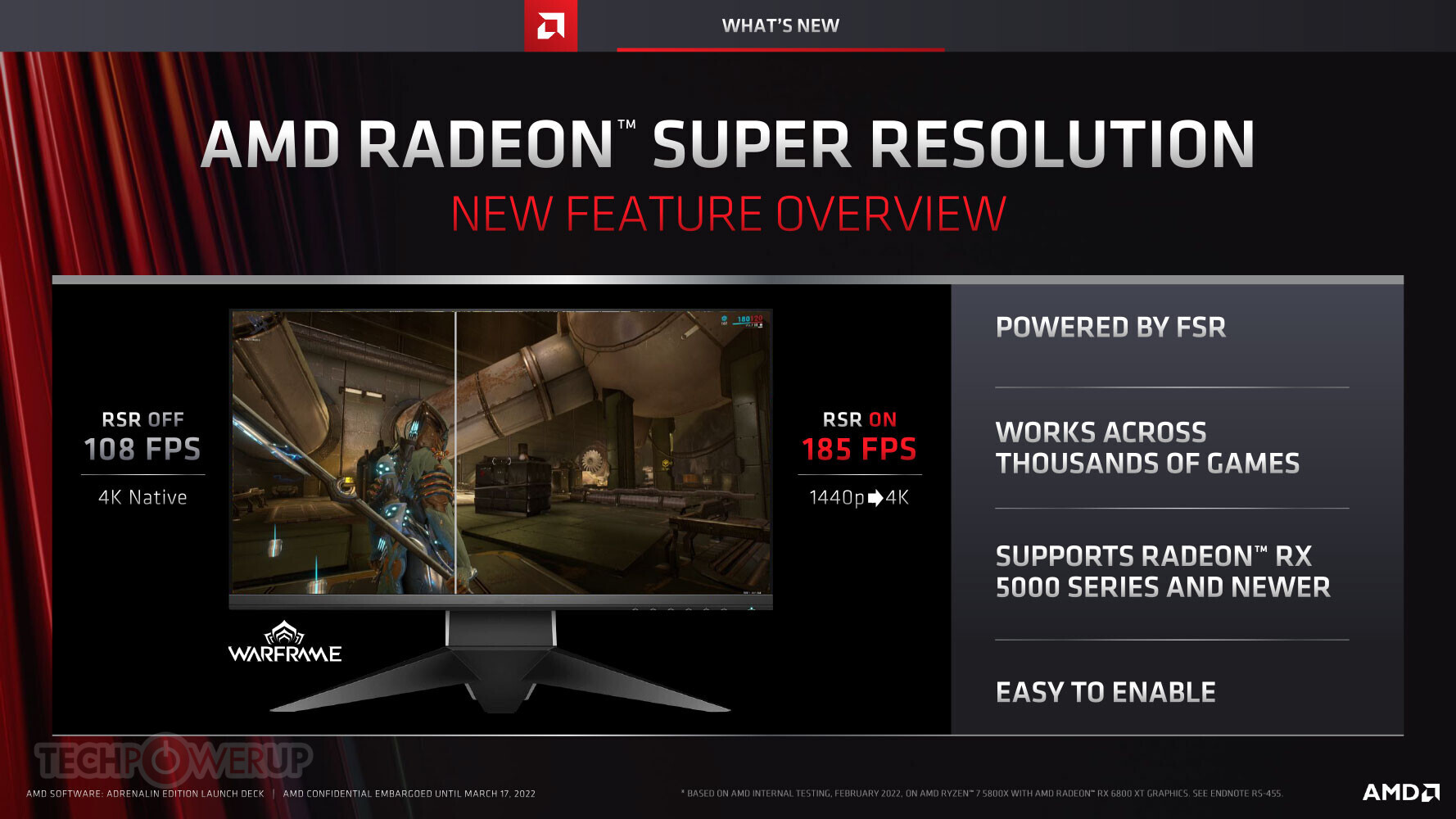AMD Unveils Radeon Super Resolution, Brings Performance Improvements to Thousands of Games

This means that thousands of games can benefit from RSR, as the feature is agnostic to what it’s upscaling. There are a couple of wrinkles, though. First, you’ll need a Radeon RX 5000 or RX 6000 series GPU, based on the RDNA or RDNA2 graphics architectures. The older “Vega” or “Polaris” architectures don’t support it. “Vega” is still a current architecture, given that Ryzen 5000 series processors with Radeon Graphics, use a “Vega” based iGPU. The feature should, however, work with the RDNA2-based iGPU of the Ryzen 6000 “Rembrandt” processor. The second big catch is that since RSR comes later down the rendering pipeline than even HUD application, you may notice low-quality HUDs in some games—especially RTS or RPGs with large cluttered HUDs and inventory icons. RSR is being released through the AMD Software 22.3.1 update today.
We explored RSR in greater technical detail, and tested its performance and image quality for you in our Radeon Super Resolution article.











